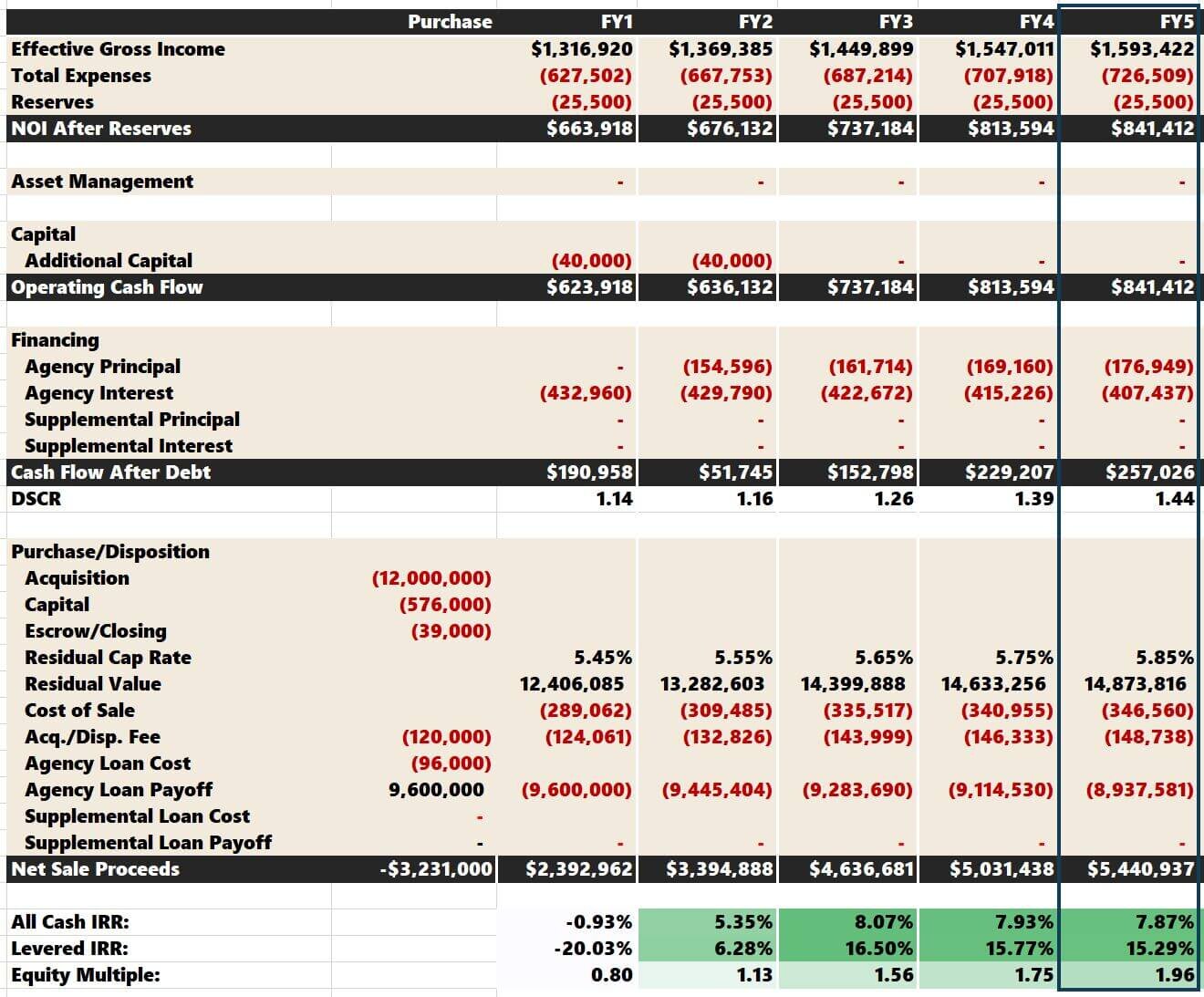

Finance
What Is Seller Credit In Real Estate
Published: January 6, 2024
Learn all about seller credit in real estate and how it can help you with your financing needs. Find out what options are available and how you can utilize seller credit to your advantage.
(Many of the links in this article redirect to a specific reviewed product. Your purchase of these products through affiliate links helps to generate commission for LiveWell, at no extra cost. Learn more)
Table of Contents
Introduction
When it comes to real estate transactions, there are various factors to consider to make the process smooth and advantageous for all parties involved. One such factor is the concept of seller credit. Seller credit, also known as seller concessions, can play a crucial role in a real estate deal, benefiting both buyers and sellers.
Seller credit refers to the seller’s agreement to contribute a specific amount towards the buyer’s closing costs or pre-paid expenses. Such expenses can include fees for appraisals, inspections, attorney fees, or even the property’s escrow fees. Seller credit can also be utilized to offset repair costs or to reduce the purchase price.
Making use of seller credit can be an attractive option for buyers who may be limited on funds or for those who want additional financial flexibility. On the other hand, sellers can also benefit from offering seller credit as it can make their property more appealing to potential buyers and help facilitate a faster sale.
In this article, we will delve deeper into the concept of seller credit in real estate. We will explore how it works, discuss its benefits and potential drawbacks, provide tips on negotiating seller credit terms, and present examples of different seller credit scenarios. By the end of this article, you will have a comprehensive understanding of seller credit and how it can impact your real estate journey.
Definition of Seller Credit in Real Estate
Seller credit, also known as seller concessions, is a financial arrangement in a real estate transaction where the seller agrees to contribute a specific amount towards the buyer’s closing costs or other expenses associated with the purchase of the property. These expenses can include fees for appraisals, inspections, attorney fees, loan origination fees, title insurance, or even property taxes.
The seller credit can also be applied to other aspects of the transaction, such as repairs or updates that the buyer may request as part of the negotiation process. The credit can be used to offset these costs or even reduce the purchase price of the property. By offering seller credit, the seller essentially agrees to “give back” a portion of the sale proceeds to the buyer.
The amount of seller credit can vary and is typically negotiated between the buyer and seller as part of the purchase agreement. The specific terms and conditions, including the maximum amount of seller credit allowed, are outlined in the contract. It is important for both parties to carefully consider and discuss the terms of the seller credit to ensure that they align with their respective goals and financial capabilities.
It is worth noting that while seller credit can be an advantageous arrangement for both parties, it is different from a discount on the purchase price. A discount on the purchase price directly reduces the amount the buyer pays, while seller credit contributes to the buyer’s closing costs or other expenses associated with the purchase.
Overall, seller credit provides flexibility and financial assistance to buyers, helping them with the upfront costs of purchasing a property. At the same time, it can make the seller’s property more attractive to potential buyers, potentially speeding up the sale process. When used effectively, seller credit can be a win-win situation for both parties involved in a real estate transaction.
How Seller Credit Works
Seller credit in a real estate transaction typically comes into play during the negotiation phase. Once the buyer and seller have agreed upon a purchase price for the property, they can then discuss the possibility of seller credit as part of the overall deal. Here is a step-by-step breakdown of how seller credit works:
- Negotiation: The buyer and seller negotiate the terms of the seller credit as part of the purchase agreement. This includes determining the amount of the credit and any conditions or limitations.
- Purchase Agreement: The agreed-upon terms regarding seller credit are included in the purchase agreement, which is a legally binding contract between the buyer and seller.
- Escrow: Once the purchase agreement is finalized and signed, the transaction moves into escrow. During this period, the seller’s funds are held by a neutral third party until all the conditions of the contract are met.
- Finalizing the Loan: The buyer works with their lender to secure financing for the purchase. The lender will take into account the seller credit when calculating the total amount needed for closing costs and down payment.
- Closing: On the closing day, the buyer and seller meet to sign the necessary paperwork. During this process, the seller credit is applied towards the buyer’s closing costs or other expenses as outlined in the purchase agreement.
- Disbursement: After the closing, the funds from the sale, including the seller credit, are disbursed. The buyer’s closing costs are paid, and any additional funds owed to the seller or other parties are distributed.
It is important to note that the use of seller credit can have an impact on the overall financing of the transaction. The buyer’s lender may have specific guidelines and restrictions on the amount and type of seller credit allowed. It is advisable for both the buyer and seller to consult with their respective agents and lenders to ensure compliance with any applicable regulations or restrictions.
Furthermore, the seller credit may have tax implications for both parties. It is recommended to consult with a tax professional to understand the potential tax consequences of utilizing seller credit in a real estate transaction.
Overall, seller credit provides a flexible and beneficial option for both buyers and sellers. It can help alleviate some of the financial burden on the buyer while making the seller’s property more appealing. By understanding how seller credit works, buyers and sellers can navigate the real estate transaction process more effectively and make well-informed decisions.
Benefits of Seller Credit in Real Estate
Seller credit offers several benefits to both buyers and sellers in a real estate transaction. Understanding these advantages can help buyers and sellers make informed decisions and leverage seller credit to their advantage. Here are some of the key benefits of seller credit:
- Financial Assistance for Buyers: Seller credit can provide financial assistance to buyers by helping to cover their closing costs or pre-paid expenses. This can be especially beneficial for first-time homebuyers or buyers with limited funds, as it reduces the upfront costs associated with purchasing a property.
- Increased Buying Power: By utilizing seller credit, buyers can potentially increase their buying power. With a portion of their closing costs covered by the seller, buyers may be able to afford a higher purchase price or have more cash available for other expenses related to the purchase.
- Faster Sale: Offering seller credit can make a property more appealing to potential buyers. Buyers may be more inclined to make an offer on a property when they know that the seller is willing to contribute to their expenses. As a result, seller credit can help facilitate a faster sale.
- Competitive Advantage for Sellers: In a competitive real estate market, offering seller credit can give sellers a competitive edge. By providing this financial incentive, sellers can differentiate their property from others, making it more attractive to potential buyers and potentially leading to more favorable offers.
- Flexibility in Negotiations: Seller credit offers flexibility in negotiations between buyers and sellers. It can be used as a bargaining tool to address repair requests or negotiate other terms of the purchase agreement, providing a win-win situation for both parties.
- Potential Tax Benefits: In some cases, seller credit may offer potential tax benefits. Buyers may be able to deduct a portion of their closing costs on their tax returns, reducing their overall tax liability. It is advisable to consult with a tax professional to understand the specific tax implications and benefits.
These benefits demonstrate the value of seller credit in a real estate transaction. Buyers can enjoy financial assistance and increased buying power, while sellers can leverage seller credit to attract buyers and facilitate a quicker sale. It is important for both parties to carefully consider the advantages and potential drawbacks of seller credit and to negotiate terms that align with their specific goals and circumstances.
Potential Drawbacks of Seller Credit
While seller credit can provide various benefits in a real estate transaction, it is important to consider the potential drawbacks as well. Understanding these drawbacks can help buyers and sellers make informed decisions and assess the impact of seller credit on their specific circumstances. Here are some potential drawbacks of seller credit:
- Lower Net Proceeds for Sellers: Offering seller credit reduces the amount of money the seller receives from the sale. While this may be offset by a higher purchase price or a quicker sale, sellers need to consider the impact on their net proceeds and financial goals.
- Potential Higher Purchase Price: Buyers need to be aware that seller credit may result in a higher purchase price for the property. The seller credits the buyer to cover certain expenses, but this amount may be factored into the overall cost of the property.
- Appraisal Challenges: In some cases, the use of seller credit can lead to appraisal challenges. If the appraised value of the property does not align with the purchase price, it may affect the buyer’s ability to secure financing, potentially derailing the transaction.
- Stricter Lender Requirements: Some lenders have strict guidelines and restrictions when it comes to seller credits. Buyers and sellers need to be mindful of these requirements to ensure the credit is within the allowable limits and complies with the lender’s policies.
- Limited Seller Credit Amount: The amount of seller credit that can be offered may be limited by the buyer’s lender, the type of loan, or the specific laws and regulations of the area. Buyers and sellers need to be aware of these limitations and negotiate accordingly.
- Impact on Appraisal Contingency: In real estate transactions where an appraisal contingency is in place, the use of seller credit can affect the appraisal process and potentially jeopardize the deal if the property does not appraise for the purchase price plus the credit amount.
It is crucial for both buyers and sellers to carefully evaluate these potential drawbacks and weigh them against the benefits of seller credit. Communication and collaboration between the parties, as well as the guidance of experienced real estate professionals, can help navigate through these challenges and ensure a successful transaction.
Ultimately, understanding and considering the potential drawbacks of seller credit allows buyers and sellers to make informed decisions, negotiate effectively, and mitigate any risks associated with this financial arrangement.
Negotiating Seller Credit Terms
When it comes to negotiating seller credit in a real estate transaction, both buyers and sellers should approach the process with careful consideration and clear communication. Here are some key tips to keep in mind when negotiating seller credit terms:
- Research and Preparation: Before entering into negotiations, both buyers and sellers should do their research and understand the market conditions, comparable sales, and the specific needs and goals of the other party. This information will help guide the negotiation process.
- Setting Realistic Expectations: Sellers should consider their financial goals and assess the impact of offering seller credit on their net proceeds. Buyers should be mindful of their budget and financing options. Understanding these factors will help set realistic expectations during the negotiation process.
- Consider Both Cash and Credit: In some cases, buyers may prefer a lower purchase price instead of seller credit. Sellers can consider this option and weigh the pros and cons to find the best solution that benefits both parties.
- Understand Lender Requirements: Buyers and sellers should be aware of the lender’s guidelines and restrictions on seller credits. If the credit exceeds these limits, it may affect the buyer’s ability to secure financing, potentially derailing the transaction.
- Seek Professional Guidance: It is advisable for buyers and sellers to work with experienced real estate agents and/or attorneys who can provide guidance and negotiate on their behalf. These professionals can bring expertise and objective advice to ensure a fair and successful negotiation.
- Flexibility and Creative Solutions: In some cases, buyers and sellers may encounter obstacles during the negotiation process. It is important to remain flexible and open to creative solutions that address the needs and goals of both parties.
- Put It in Writing: Once both parties have agreed on the terms of the seller credit, it is essential to document the agreement in writing as part of the purchase agreement. This ensures that the terms are legally binding and provides clarity for all parties involved.
Negotiating seller credit terms requires open communication, mutual understanding, and realistic expectations from both buyers and sellers. By following these tips and seeking professional guidance, buyers and sellers can navigate the negotiation process effectively and reach a mutually beneficial agreement.
Examples of Seller Credit Scenarios
Seller credit can manifest in various scenarios, depending on the specific needs and circumstances of the buyer and seller. Here are a few examples of common seller credit scenarios in real estate:
- Covering Closing Costs: A common use of seller credit is to cover the buyer’s closing costs. For instance, if the closing costs amount to $10,000, the seller may agree to contribute $5,000 toward these expenses. This reduces the financial burden on the buyer, allowing them to use their funds for other purposes.
- Repair Credits: In some cases, the buyer may request repairs or updates to the property as a condition of the sale. Instead of actually completing the repairs themselves, the seller may opt to offer a repair credit. For example, if the estimated cost of repairs is $8,000, the seller can provide a credit of $8,000 to the buyer, which can be used towards addressing the necessary repairs.
- Price Reduction: Instead of offering a credit for specific expenses, the seller may choose to reduce the purchase price of the property. This effectively gives the buyer financial flexibility to allocate the savings to other aspects of the transaction, such as closing costs or repairs.
- Buydown Points: In certain cases, the seller may agree to pay for discount points on the buyer’s mortgage loan. By paying for these points upfront, the seller reduces the buyer’s monthly mortgage payment, making the property more affordable over the long term.
- Prepaid Expenses: Seller credit can also be utilized to cover prepaid expenses, such as property taxes or homeowner’s insurance. For example, if the buyer is required to prepay one year of insurance premiums, the seller may agree to contribute a portion of that cost through a credit.
These examples illustrate how seller credit can be applied in different scenarios to benefit both buyers and sellers. It is important for buyers and sellers to discuss their specific needs and goals during the negotiation process to determine the most suitable seller credit arrangement.
Remember, the terms and conditions of seller credit should be clearly defined in the purchase agreement to ensure that both parties are in agreement and the credit is properly accounted for during the closing of the transaction.
Conclusion
Seller credit is a valuable tool in real estate transactions, offering benefits to both buyers and sellers. It provides financial assistance to buyers by helping cover their closing costs or other expenses, increasing their purchasing power and making homeownership more affordable. At the same time, seller credit can make a property more appealing to potential buyers, potentially leading to a quicker sale for sellers.
While there are potential drawbacks and considerations associated with seller credit, careful negotiation, clear communication, and professional guidance can help buyers and sellers navigate the process effectively. Setting realistic expectations, understanding lender requirements, and considering creative solutions can contribute to a successful negotiation and a mutually beneficial agreement.
It is crucial for both buyers and sellers to assess their specific financial goals and circumstances when determining whether to offer or accept seller credit. Consulting with real estate professionals, such as agents and attorneys, can provide valuable insights and guidance during the negotiation process.
In conclusion, seller credit offers flexibility, financial assistance, and competitive advantages in real estate transactions. By understanding how seller credit works, weighing its benefits and potential drawbacks, and negotiating suitable terms, buyers and sellers can leverage this tool to achieve their respective goals and facilitate a successful real estate transaction.














